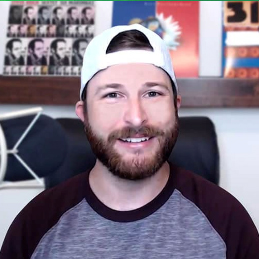By Bobby Hoyt, Founder of Millennial Money Man
Sponsored by Regions Bank, Member FDIC. All thoughts are my own.
Paying down debt is a serious undertaking, and the return of student loan repayments has added another degree of difficulty for many. However, with motivation to succeed and a solid plan, you can lay the groundwork to get started.
1. Start with a budget
Anytime you want to make a financial move, like paying down debt, buying a house or starting to invest, you need to start with a budget. Your budget accounts for all of the money coming in and going out each month. A good budget can help you make informed decisions as you create a realistic debt pay off plan. Try this monthly spending plan worksheet to help you get started.
The first step of creating a budget is to look at your income. Make a list of every income source, no matter how big or small, including income from unemployment and any side hustles.
After you have a good understanding of your income, evaluate your expenses. There are some fixed expenses that you can easily plan for, such as mortgage, insurance, childcare, and internet service. Variable expenses, like grocery costs, fuel, entertainment, clothing, and medical expenses can change monthly. These are more difficult to plan for, but you can look back at credit card and bank statements to get a good idea of what you spend on average.
Next, make a list of non-essential spending and expenses you can reduce. Can you find a cheaper cell service? If you’re still paying for cable, it might be time to cut the cord.
To pay off debt, you need to find a balance between paying your monthly bills and finding extra money in your budget to put towards your debt. Any extra amount of money you can put towards your debt is something.
2. Set a debt payoff goal you can achieve
Setting a realistic and achievable financial goal is important. We all need to be gentle with ourselves and that extends to finances, too.
Don’t focus on the total amount of your debt. Instead, center your goal on what you can pay each month based on your budget. Setting a goal of putting $400 towards your debt each month sounds much more attainable than thinking about paying off $20,000 of debt, for example. Use this calculator to help you determine your monthly payments and repayment timeline.
If there are changes to your income or expenses, make sure to update your budget and goal throughout the year. You want that goal to stay achievable each month.
3. Use a debt payoff strategy
The debt snowball and debt avalanche methods are examples of debt payoff strategies that can make effective use of the money you have to pay off debt. With both strategies, you’re making the minimum payments on all of your debts. The difference is how you allocate extra money.
The debt snowball method builds momentum by focusing on small, early wins. You find the debt with the smallest balance and put any extra funds towards paying off that debt first. Once your smallest debt is paid off, you move to the debt with the next smallest balance. Paying off a debt in full early on can keep you motivated as you start getting closer to attacking debts with bigger balances.
With the debt avalanche method, you put any extra money toward debt with the highest interest rate first. This can save you money on interest charges by eliminating high-interest rate balances. Once you’ve paid off the debt with the highest interest rate, you focus on the debt with the next highest rate.
Either one of these strategies can be beneficial, although if you have high-interest rate credit card debt, the avalanche may save you more money. You can always start with one strategy and switch to the other to see which one works better for you. Remember, you’re making a dent in your debt anytime you are paying more than the minimum balance.
4. Factor in your student loans
If you have federal student loans, you’ve probably had to think about how you’ll fit those payments back into your budget. For those who have experienced job loss, there are income-driven repayment plans that are a lower amount based on your monthly income. You can also consider refinancing federal loans, but you will lose federal student loan protections. Private student loan borrowers have fewer options, so it’s likely you’re still making payments on any private student loans you have. You may want to look into student loan refinancing, which is when a private lender pays off your student loans and gives you a new loan with new terms. Student loan refinancing is ideal if you have private student loans, especially high-interest rate ones. Refinancing your student loans can save you a decent amount of money throughout your pay off, although the amount you save on refinancing will largely depend on your interest rate, which is based on credit score.
You can also consider extending your loan term to lower your monthly payment, but the downside is that you can seriously add to your debt. It’s worth researching the pros and cons to see what’s best for your financial situation.
5. Focus on your emergency fund
When I was paying off my $40,000 student loan debt, I put every extra dollar I had towards my debt payoff. Even if I made as little as an extra $3 taking surveys online, it went towards my debt. While those and other efforts helped me pay my debt off in 18 months, I made one major mistake – I didn’t have an emergency fund. Had there been one major unexpected expense while I was paying off my debt – like my truck broke down or I needed dental surgery – I would have been unable to cover that expense and could have wrecked all the progress I made on my debt up until that point.
An emergency fund protects you from debt. It’s how you pay for unexpected expenses, job loss, pay cuts, and more. It can help prevent you from taking on more debt when an unexpected expense pops up. And it’s never too late to start building an emergency fund.
The rule of thumb is to have at least 3-6 months’ worth of expenses saved up for emergencies, but having $500-$1,000 saved is a good start while you’re paying down your debt. Consider focusing on your emergency fund first. Once you reach that goal, you can reallocate what you were putting in your emergency fund towards your debt payoff.
6. Consider a balance transfer card
A balance transfer card can be a useful tool if you’re trying to attack your high-interest rate credit card debt. Balance transfer cards have low to 0% interest rate promotional periods that give you a chance to pay off your debt at a much lower rate.
In theory, balance transfer cards can be incredibly useful, and they’re not a bad idea if you know you can pay off your debt during the promotional period. However, it does cost money to transfer your balances, which can negate the interest savings in some cases. Further, many people find it difficult to pay off the balance during the promotional period. If you’re relying on your credit card to supplement your income, this probably isn’t the option for you.
If you’re interested in seeing if a balance transfer card is right for you, I recommend using this calculator. You enter your current credit card balances, interest rate, and monthly payment to see if it makes sense financially and will help you pay off your debt.
The final word on paying down debt
Making a plan to pay off debt is an excellent goal, but be kind with yourself. If something happens along the way and you need to adjust your strategy, that’s okay. These tips can help you create a realistic plan that sets you up for success and fuels your motivation to keep moving forward.
About Bobby Hoyt
 Inspired by a mentor to reach for more after starting MillennialMoneyMan.com and paying off his loans, Bobby Hoyt began a pursuit of all things personal finance. Unsatisfied with the financial condition of his fellow millennials, he applied his knowledge as an educator to his blog.
Inspired by a mentor to reach for more after starting MillennialMoneyMan.com and paying off his loans, Bobby Hoyt began a pursuit of all things personal finance. Unsatisfied with the financial condition of his fellow millennials, he applied his knowledge as an educator to his blog.
His mission is to encourage fellow Millennials (and generations beyond!) to adhere to four main principles:
- Live below your means until you don’t have to anymore.
- Don’t finance stuff you don’t need.
- Let your friends pass you up (don’t try to keep up with the Joneses)
- Work really hard, then make your money work for you.
Through his work on Millennial Money Man, he hopes to help change the face of personal finance in Gen Y by challenging his readers to slay their debt, increase their income, and plan for their future.
Since quitting his band director job after earning $3 in ad revenues (a tactic he doesn’t recommend to students of his blogging courses) he has grown his blog to reach over 2 million readers each year. He’s a regular personal finance columnist for the American Psychological Association and has made appearances on major media outlets such as Forbes, CNBC, and MarketWatch. A firm believer in the importance of the side hustle (and an educator who values sharing his knowledge), he partnered with former high school classmate Mike Yanda to teach others how to grow their income by running Facebook ads, along with two other active blogger-focused courses at Laptop Empires.
Bobby lives in the Houston, Texas area with his wife Coral, their wonderfully strange dog Strider, and can usually be found on the golf course, or boating on some body of water when they aren’t traveling.










